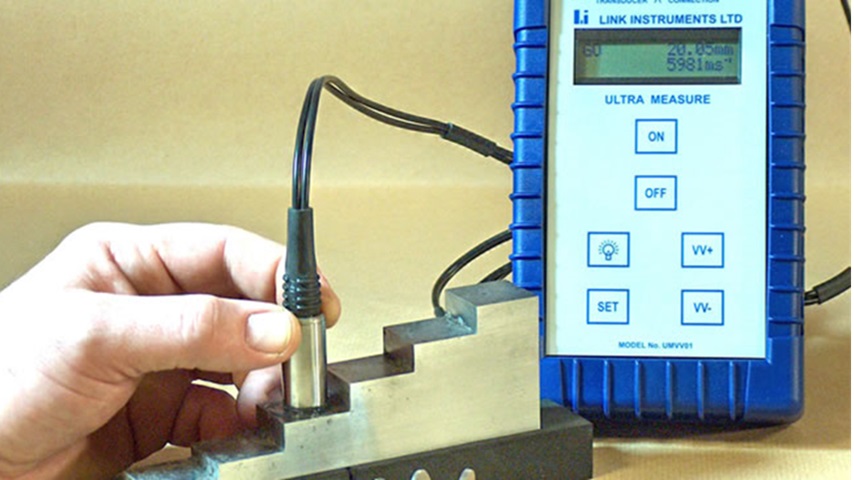Ultrasonic thickness measurement has emerged as a pivotal technology in the realm of non-destructive testing (NDT), offering precise insights into material thickness without causing any damage. This advanced technique utilizes high-frequency sound waves to assess the thickness of various materials, making it indispensable across diverse industries. This blog explores the wide-ranging applications and benefits of ultrasonic thickness measurement, highlighting its significance in ensuring safety, reliability, and efficiency in industrial operations.
Understanding Ultrasonic Thickness Measurement
Ultrasonic thickness measurement operates on the principle of sound wave propagation through materials. A transducer emits ultrasonic waves into the material, which travel until they encounter the opposite surface. The waves then bounce back to the transducer, and by calculating the time taken for the waves to return and knowing the speed of sound in the material, the thickness can be accurately determined. This non-destructive method preserves the integrity of the material being tested and provides real-time data, making it ideal for quality control, maintenance, and safety assessments.
Applications Across Industries
1. Aerospace and Aviation: In the aerospace industry, where safety and precision are paramount, ultrasonic thickness measurement plays a crucial role in inspecting aircraft components such as wings, fuselage panels, and engine parts. By detecting corrosion, erosion, or material degradation early, this technology helps maintain structural integrity and ensures compliance with rigorous aviation standards.
2. Automotive Manufacturing: Automotive manufacturers utilize ultrasonic thickness measurement to monitor the thickness of vehicle body panels, chassis components, and welds during production. This ensures uniformity in material thickness, enhances durability, and contributes to vehicle safety and performance.
3. Oil and Gas Industry: Pipelines, storage tanks, and pressure vessels in the oil and gas sector are subject to harsh environmental conditions that can lead to corrosion and structural deterioration. Ultrasonic thickness measurement is instrumental in monitoring the thickness of these assets, identifying thinning areas, and facilitating timely maintenance to prevent leaks and ensure operational reliability.
4. Marine and Offshore Structures: In the marine sector, ultrasonic testing is essential for assessing the thickness of ship hulls, offshore platforms, and underwater pipelines. Regular inspections help mitigate the risks associated with corrosion and material degradation, thereby prolonging the lifespan of maritime assets and ensuring safe operational conditions.
Benefits of Ultrasonic Thickness Measurement
-
Accuracy and Precision: Provides highly accurate measurements, typically within millimeters, ensuring reliable data for critical decision-making in maintenance and safety assessments.
-
Non-Destructive Testing: Does not alter or damage the material being tested, allowing for repeated inspections without compromising the integrity of the asset.
-
Versatility: Suitable for a wide range of materials including metals, plastics, composites, and ceramics, making it adaptable for diverse industrial applications.
-
Efficiency and Cost-Effectiveness: Facilitates proactive maintenance by identifying potential issues early, thereby reducing downtime, minimizing operational costs, and optimizing asset management.
Implementing Ultrasonic Thickness Measurement
To maximize the effectiveness of ultrasonic thickness measurement, industries should adhere to best practices:
-
Training and Certification: Ensure that technicians conducting ultrasonic testing are trained and certified in NDT techniques and equipment operation.
-
Calibration and Maintenance: Regularly calibrate ultrasonic equipment to maintain accuracy and reliability in measurements. Follow manufacturer guidelines for maintenance and calibration schedules.
-
Quality Assurance: Integrate ultrasonic testing as part of a comprehensive quality assurance program to uphold product standards and regulatory compliance.
-
Data Management: Implement robust systems for recording, storing, and analyzing inspection data to track trends, identify potential issues, and schedule maintenance proactively.
Future Trends in Ultrasonic Thickness Measurement
-
Digitalization and IoT Integration: Increasing connectivity and integration with digital platforms and IoT devices for real-time data monitoring, analysis, and predictive maintenance.
-
Advancements in Artificial Intelligence (AI): AI algorithms will play a significant role in interpreting ultrasonic inspection data, identifying patterns, and predicting equipment failures with greater accuracy.
-
Miniaturization and Portability: Development of handheld and portable ultrasonic devices for on-site inspections in remote or challenging environments, expanding the accessibility and applicability of ultrasonic testing.
Conclusion
Ultrasonic thickness measurement technology continues to evolve, revolutionizing quality control, maintenance practices, and safety standards across industries. From aerospace and automotive manufacturing to oil and gas and marine sectors, this technology ensures the reliability of critical assets, enhances operational efficiency, and contributes to overall safety. As industries embrace digitalization and advancements in AI, the future of ultrasonic thickness measurement promises even greater accuracy, efficiency, and versatility, reaffirming its role as an indispensable tool in modern industrial practices. By leveraging the capabilities of ultrasonic testing, industries can mitigate risks, optimize asset performance, and uphold the highest standards of quality and safety in their operations.












